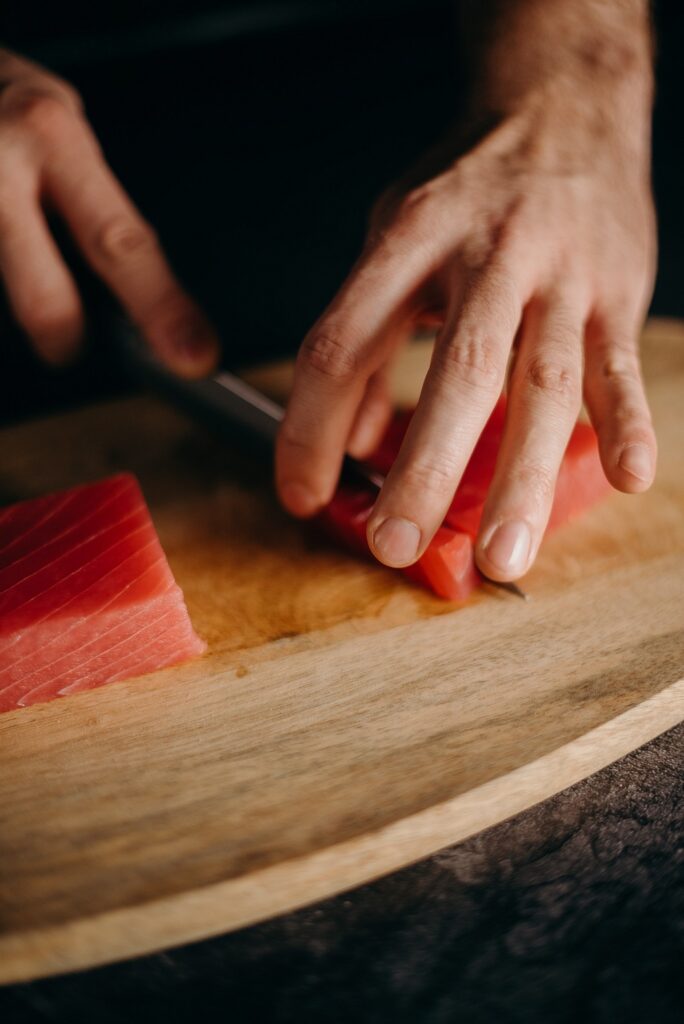Mastering the Art of Precision Cutting
Knife skills are the foundation of every chef’s repertoire. Whether you’re a professional chef or a home cook, mastering the art of precision cutting can significantly enhance your culinary journey. Proper knife skills not only improve your efficiency in the kitchen but also ensure safety and consistency in your cooking. Here, we will delve into the importance of knife skills, explore various cutting techniques, and provide practical tips to help you master the art of precision cutting.
The Importance of Knife Skills:
Knife skills are more than just chopping ingredients; they are the cornerstone of every culinary creation. By mastering knife skills, you gain control over the size, shape, and texture of your ingredients, allowing for even cooking and an aesthetically pleasing presentation. Proper knife techniques also reduce the risk of accidents and injuries in the kitchen. Investing time and effort into honing your knife skills will significantly elevate your cooking experience.
Essential Knife Types:
Before diving into knife skills, it’s important to understand the different types of knives and their specific uses. The essential knives that every cook should have in their arsenal include:
- Chef’s Knife: The workhorse of the kitchen, with a broad blade and sharp edge for chopping, slicing, and dicing.
- Paring Knife: Ideal for intricate tasks such as peeling, trimming, and precise cutting.
- Serrated Knife: Designed for slicing bread, delicate fruits, and tomatoes.
- Utility Knife: A versatile knife used for smaller slicing and cutting tasks.
- Santoku Knife: Originating from Japan, this knife is excellent for precision cutting, slicing, and dicing.
Knife Grip and Posture:
Proper grip and posture are essential for safe and efficient knife handling. Hold the knife with a firm grip, wrapping your fingers around the handle while keeping your thumb and index finger on the blade for better control. Maintain a relaxed but steady grip to ensure accuracy and prevent slippage. Position your body and knife at a comfortable angle, with your non-dominant hand acting as a guide for the ingredients.
Basic Cutting Techniques:
To master knife skills, you must familiarize yourself with the fundamental cutting techniques. Here are a few essential techniques to practice:
- Chopping: Cut ingredients into relatively uniform pieces by using a downward motion with the knife, lifting the blade slightly after each cut.
- Dicing: Start by creating slices, then stack them and cut into small cubes.
- Julienne: Cut long, thin strips by first creating rectangular slices, then stacking them and cutting lengthwise into thin strips.
- Mincing: Finely chop ingredients by using a rocking motion with the knife, keeping the tip of the blade in contact with the cutting board.
Practice these techniques with various ingredients, ensuring consistency in size and shape to enhance your knife skills.
Knife Maintenance and Sharpening:
A sharp knife is essential for precise cutting and reduces the risk of accidents. Regular knife maintenance and sharpening are necessary to maintain the blade’s edge. Use a honing rod to realign the blade’s edge before each use, and sharpen the knife using a whetstone or a professional knife sharpener as needed. Proper storage, such as using a knife block or a magnetic strip, also helps to protect the blade and maintain its sharpness.
Safety Precautions:
Knife skills require careful attention to safety to prevent accidents. Always keep your focus on the task at hand, avoid distractions, and work on a stable cutting surface. Use a cutting board that won’t slip to ensure stability. Keep your fingers curled under and away from the blade, using a “claw” grip with your non-dominant hand to hold the ingredients securely. When not in use, store knives in a designated knife block or sheath to prevent accidental cuts and ensure safe handling.
Practice and Patience:
Mastering knife skills takes time and practice. Start by focusing on one technique at a time and gradually incorporate others as you become more comfortable. Take your time, be patient with yourself, and allow for mistakes along the way. Practice regularly, even if it’s just for a few minutes each day, to build muscle memory and improve your speed and accuracy. Remember, knife skills are a lifelong learning process, and even experienced chefs continue to refine their techniques.
Utilizing Knife Skills in the Kitchen:
Once you’ve mastered the art of precision cutting, you can apply your knife skills to various culinary tasks. From prepping vegetables for a stir-fry to finely mincing garlic for a flavorful sauce, the possibilities are endless. Embrace the efficiency and confidence that comes with proficient knife skills, and you’ll find joy in the process of preparing ingredients and creating delicious meals.
Knife skills are an essential culinary skill set that every cook should strive to master. By understanding the importance of proper grip and posture, familiarizing yourself with different cutting techniques, maintaining and sharpening your knives, and practicing safety precautions, you can elevate your cooking experience and achieve precise, consistent results in the kitchen. Embrace the journey of learning and honing your knife skills, and enjoy the satisfaction of creating culinary masterpieces with the finesse and precision of a skilled chef.
